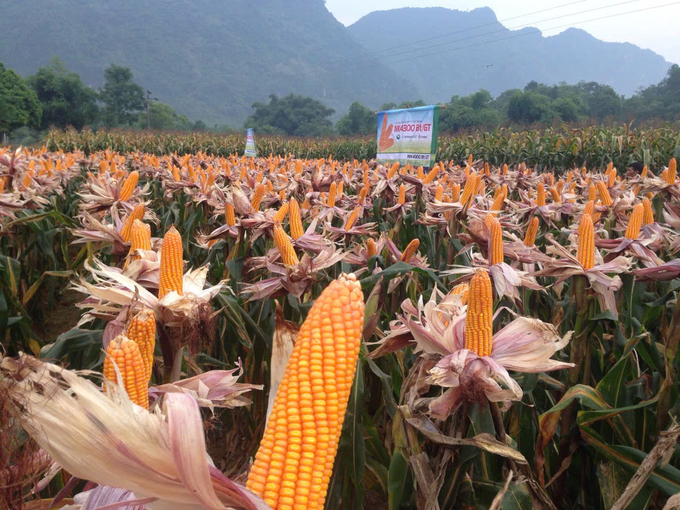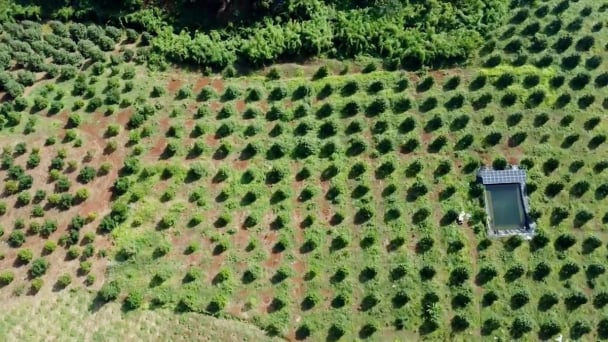May 30, 2025 | 17:55 GMT +7
May 30, 2025 | 17:55 GMT +7
Hotline: 0913.378.918
May 30, 2025 | 17:55 GMT +7
Hotline: 0913.378.918

Associate Professor Dr. Nguyen Huu Ninh speaks at the forum. Photo: Tung Dinh.
During the forum on "Achievements and Directions for Applying Biotechnology to Support Sustainable Agricultural Development in the Context of International Integration" on October 5, Assoc. Prof. Dr. Nguyen Huu Ninh, Deputy Director of the Department of Science, Technology, and Environment (MARD), provided useful insight into the implementation of biotechnology applications in other countries and the adoption of these applications in Vietnam.
He estimated that the global development rate of biotechnology was 1.3% annually from 2015 to 2020. This is the basis for the development of a biotechnology program for agricultural development in the future, according to Dr. Ninh.
The remarkable advancement of biotechnology on a global scale is the result of a variety of factors, such as population growth, the necessity to guarantee food security, climate change, and natural disasters. Consequently, it has become imperative to modify and implement technology in order to develop new varieties that generate superior results for producers and fulfill the requirements of food security.
Modern reproduction techniques, genetic engineering, and genome editing have introduced new varieties with desirable traits, including drought tolerance, disease resistance, and salt tolerance; improved nutrient use, natural productivity, and water-use efficiency; and traits that are designed to conserve biodiversity, water, and soil, as well as reduce greenhouse gas emissions. This has ensured that biotechnology applications result in breakthroughs. The future will see a greater emphasis on these aspects.
The legal framework that permits the practical application of biotechnology products is a matter of concern on a global and domestic scale. The licensing and utilization of biotechnology products have been widespread on a global scale in recent years. 73 countries worldwide permit the production and commercialization of GMO products. Traditional biotechnology foundations and prior gene-editing technologies are the sources of modern biotechnology, as per Dr. Ninh. This fundamental technology serves as the foundation for the development of products and the modification of technological processes.

Genetically modified corn developed in Vietnam.
With instances from the agricultural sector, specifically crop production, Dr. Ninh underscored the importance of biotechnology as a means of achieving breakthroughs. Countries that create favorable environments for biotechnology applications have developed "classical" genetically modified crops. These crops have expanded the range of traits in new crops, such as pest resistance and herbicide tolerance, developed drought-resistant and disease-resistant crops, improved nutrition, and created plant-based products as alternatives to meat.
Biotechnology facilitates the identification of traits that are relevant to consumers in gene-edited commodities. Furthermore, biotechnology is implemented to facilitate pest control through genetically modified insects and to enhance animal welfare through gene-edited animals. In general, the global growth rate of biotechnology was 1.3% from 2015 to 2020.
The United States and Japan are the two most developed countries in biotechnology application, according to a representative from the Department of Science, Technology, and Environment, who provided examples of biotechnology applications.
Several new agricultural traits, including drought- and salt-tolerant soybeans and corn resistant to leaf blight, increased starch content in the stems and leaves of corn for nutritional assurance, and enhanced preservation value in the production chain, such as non-bruising potatoes and lettuce, are the primary focus of biotechnology in the U.S. crop production sector.
In Japan, the market has experienced rapid expansion following the commercialization of products such as GABA-enriched tomatoes, fast-growing pufferfish, and sea bream.
The proposed limit in other regions, such as the EU, is 10 NU. Genetically modified products are those that exceed this threshold, while conventional products are those that fall below it.
Assoc. Prof. Dr. Nguyen Huu Ninh observed that scientific and technological research frequently falls short of reality in Vietnam. The impact of the adjustments made today may not be immediately apparent for many years. "Therefore, the impact of biotechnology is relatively difficult to perceive," he indicated.
The Party and the State's attention to biotechnology is the source of Vietnam's strength. The Secretariat issued Directive No. 50 in 2005, which urged the advancement and application of biotechnology to advance industrialization and modernization.
Most recently, the Politburo issued Resolution No. 36 on January 30, 2023, which designated biotechnology as a critical technical economic sector.
The Department of Science, Technology, and Environment has recommended that the Ministry of Agriculture and Rural Development prioritize the construction and optimization of critical laboratories, particularly those that specialize in nano and cellular technologies, in the immediate future.

In Vietnam, corn, soybeans and cotton are the three crops that apply and develop the most genetically modified products.
The number of scientific and technological duties will decrease in comparison to ten years ago from now until 2030. Dr. Ninh posits that this is partially attributable to the existence of barriers in mechanisms and policies, particularly Decree 70. In particular, state assets are research results that are funded by the state budget. Consequently, businesses have been less inclined to invest in biotechnology research and collaborate.
Biotechnology research must prioritize disciplines that have the potential to generate economically valuable products in light of limited resources. Deputy Director Ninh observed that genetic engineering, which encompasses gene editing, clonal reproduction, and DNA recombination, will be the primary focus of technology in the next five years.
Additionally, he recommended that the MARD allocate resources to the development of new technologies that would minimize investment time and improve precision.
"Whole-genome sequencing is a crucial issue today. New tools like CRISPR and TALENs can pinpoint the exact location of nucleic acids (NUs), allowing for precise editing at target sites. Small changes can have a significant impact on the genome," he explained.
Translated by Linh Linh

(VAN) Several scientists and farmers are experimenting with soil treatment in some key durian-growing regions such as Cai Lay (Tien Giang), Dak Song, Gia Nghia, and Dak R’lap (Dak Nong).
/2025/05/25/4127-3-073637_820.jpg)
(VAN) Thanks to the promotion from an FAO-implemented project, vegetable production in greenhouses in Moc Chau has seen strong development, from 1.5 hectares in 2021 to nearly 50 hectares in 2024.

(VAN) FAO has recently supported USD 140,000 to implement the project 'Risk mitigation human-animal interface risks through disease control initiatives in pig farming.'

(VAN) The People's Committee of Tra Vinh province has approved an adjustment to the investment policy for the Green Hydrogen Plant project, increasing its area to approximately 52.76 hectares.
![Reducing emissions from rice fields: [2] Farmers’ commitment to the soil](https://t.ex-cdn.com/nongnghiepmoitruong.vn/608w/files/news/2025/05/05/dsc08881jpg-nongnghiep-140632.jpg)
(VAN) Clean rice cultivation model in Thuong Tan commune, Bac Tan Uyen district, is assisting local residents in achieving sustainable agriculture by substantially reducing costs, increasing productivity, and protecting the environment.

(VAN) At the conference to disseminate Resolution No. 68, AgriS introduced its digital agricultural ecosystem and reaffirmed its commitment to accompanying the Government in promoting private sector development and sustainable agriculture.

(VAN) 'Blue Ocean - Blue Foods' initiative is designed to restore marine ecosystems and establish sustainable livelihoods for local communities by cultivating a minimum of 1,000 hectares of cottonii seaweed in the first three years.